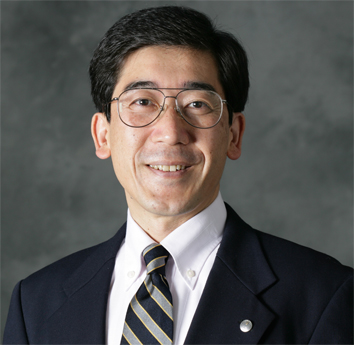|

Hideyuki Takagi, Kyushu University, Japan
Hideyuki Takagi had worked for the Central Research Laboratories of Matsushita Electric Industrial Co., Ltd. from April, 1981 to March, 1995. During these 14 years, he has researched on software engineering, speech recognition, neural networks, fuzzy systems, and genetic algorithms.
He was a Visiting Industrial Fellow of the University of California at Berkeley from October, 1991 to September, 1993, hosted by Prof. Lotfi A. Zadeh of Computer Science Division. Besides his visiting research, he played an educational role through research projects and technical meeting with students, and BISC special seminar on Soft Computing of Computer Science Division.
He has worked for Kyushu Institute of Design since April, 1995 as an Associate Professor. He belonged to Department of Acoustic Design in 1995 - 1999 and Department of Art and Information Design in 1999 - 2003. Kyushu Institute of Design and Kyushu University merged into one on October 1, 2003, and his affiliation name changed to Facullty of Design, Kyushu University.
Prof. Takagi is interested in Computational Intelligence such as neural networks, fuzzy systems, evolutionary computations, and other so-called Soft Computing technologies, especially cooperation of these technologies. Currently, his interest focuses on Interactive Evolutionary Computation which aims the cooperation of human and evolutionary computation. He is also interested in signal processing and human-machine interface. He has worked for IEEE SMC Society as the Vice-President, the Chair of Technical Committee on Soft Computing, and an Associate Editor of IEEE Trans. on SMC-B. See Detail Profile at: http://www.design/kyushu-u.ac.jp/~takagi
Abstract
Introduction to Evolutionary Computation and Statistical Tests
The first objective of this tutorial is to let students and researchers who
start to study evolutionary computation (EC) glance at EC algorithms, and
the second one is to let them know how to show the significant superiority
in experimental EC evaluations when they propose their own methods and
algorithms.
The first part of this talk is to introduce some EC algorithms including
genetic algorithms (GA), classifier system, niche GA, genetic programming,
evolutionary strategy, particle swarm optimization, differential evolution,
evolutionary multi-objective optimization, and others.
The second part is to introduce some statistical tests including t-test,
ANOVA, sign test, and others. When we evaluate methods for interactive
EC, we must conduct human subjective test to evaluate them. Statistical
tests for such psychological experiments are also included.
|



